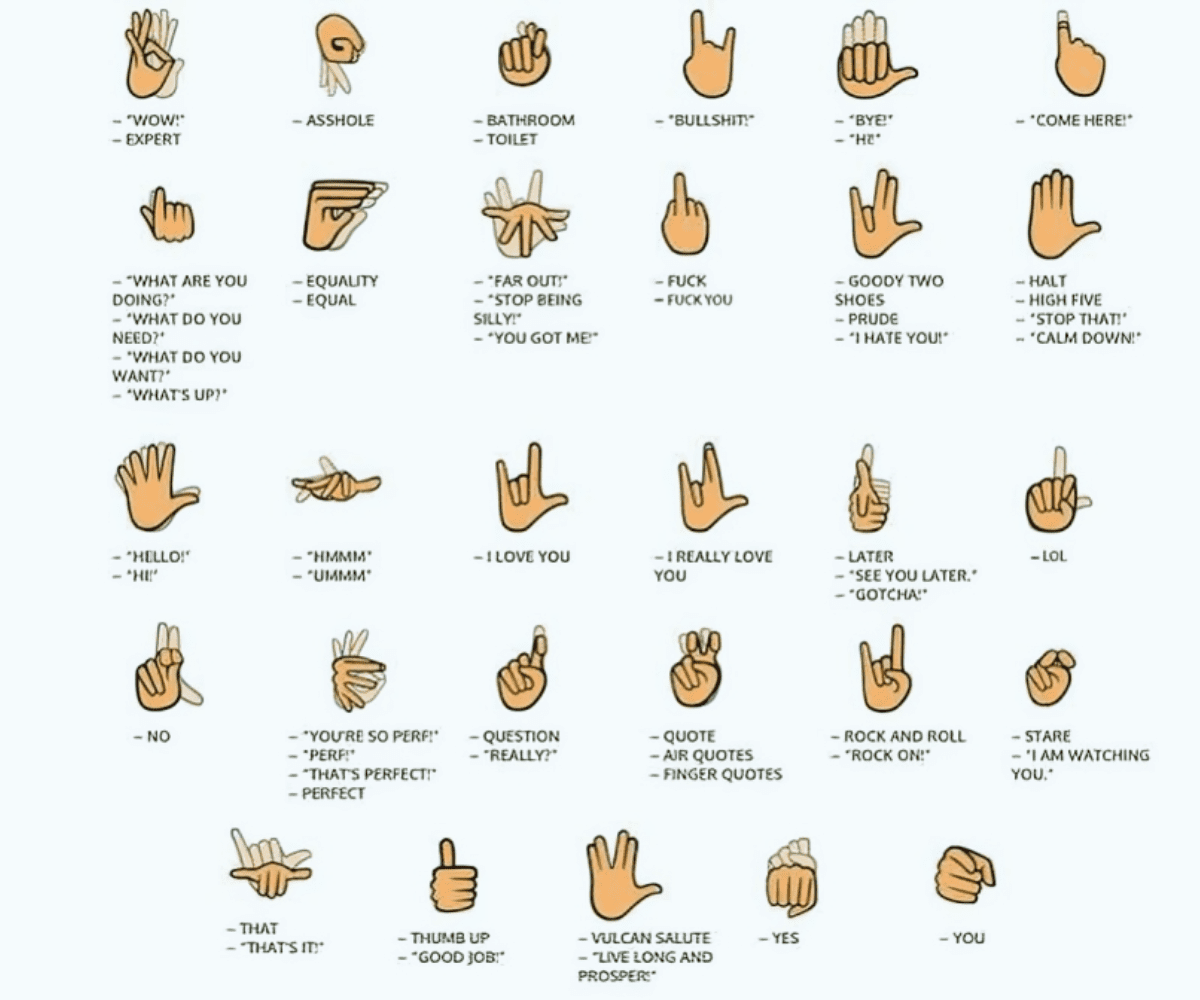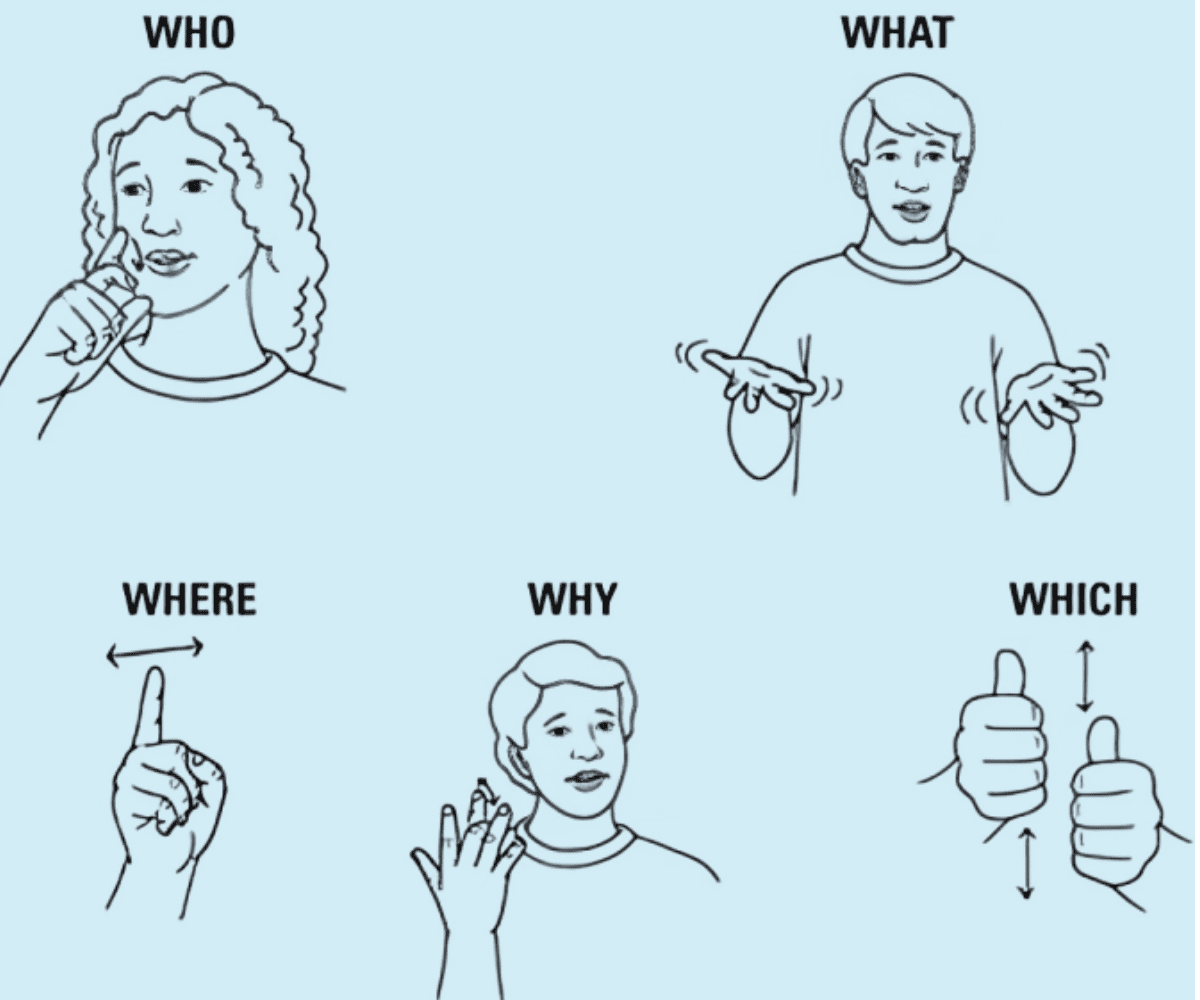Sign language is a visual-gestural language that uses hand shapes, movements, facial expressions, and body postures to convey meaning. It is the primary mode of communication for many individuals who are deaf or hard of hearing. In this guide, we’ll show you why learning sign language is important and give you everything you need to start using it. Whether you know someone who’s deaf, work with deaf people, or just want to learn something new, we’ll teach you the basics, go into more detail, and give you tips and tools to get really good at sign.


Understanding the Importance of Signs
Sign language plays a crucial role in bridging the communication gap between individuals who are deaf or hard of hearing and those who can hear. It is a complete language with its own grammar, syntax, and nuances, just like spoken languages. By learning sign, you can effectively communicate with the deaf community, fostering inclusivity and breaking down barriers.
Beyond its practical applications, signs also holds cultural significance. The deaf community has a rich and vibrant culture that is deeply intertwined with signs. Learning sign can provide insights into this culture and promote greater understanding and appreciation for diversity.
Getting Started with Sign Language
Before we talk about sign language details, it’s key to know that many countries have their own sign languages. Here, we’ll mainly talk about American Sign Language (ASL), used in the US and other places too.
Learn the Alphabet and Numbers
The first step in learning signs is to familiarize yourself with the manual alphabet and number signs. These form the building blocks of sign and will allow you to fingerspell words and communicate basic numerical information.
Understand the Basics of Sign Language Grammar
Sign language has its own unique grammar and sentence structure, which differs from spoken languages. Understanding the basic principles of sign grammar will help you effectively express ideas and communicate clearly.
Develop Your Receptive and Expressive Skills
Learning sign language involves two main components: receptive skills (understanding signed communication) and expressive skills (producing signed communication). Practice is key to improving both aspects of sign proficiency.
Building a Strong Foundation
Learn Basic Vocabulary
Like any language, sign language has a vast vocabulary. Start by learning common words and phrases related to everyday topics, such as greetings, family, colors, animals, and everyday objects. Build your vocabulary gradually, and practice regularly to reinforce what you’ve learned.
Practice Fingerspelling
Fingerspelling is the act of spelling out words using the manual alphabet. This skill is essential for communicating names, places, and words that don’t have established signs. Practice fingerspelling regularly to improve your speed and accuracy.
Study Facial Expressions and Body Language
In sign language, facial expressions and body language play a crucial role in conveying meaning and adding nuance to communication. Learn to recognize and use these nonmanual signals effectively to enhance your signing skills.
Advancing Your Sign Language Skills
As you become more comfortable with the basics, you can explore more advanced topics and techniques to further enhance your sign language proficiency.
Expand Your Vocabulary
Continue building your vocabulary by learning signs for more complex concepts, idioms, and specialized terminology. This will allow you to engage in more nuanced and in-depth conversations.
Explore Deaf Culture and Etiquette
Sign language is deeply rooted in deaf culture. Learn about the values, traditions, and etiquette within the deaf community to communicate more effectively and respectfully.
Immerse Yourself in Sign Resources
Take advantage of various resources, such as sign classes, online tutorials, deaf events, and deaf social gatherings. Immersing yourself in the language and culture will greatly accelerate your learning process.


Conclusion
Learning sign language is a great experience. It helps you connect with others and understand different cultures. It requires dedication and persistence, but the outcome is rewarding. Sign isn’t just a way to talk; it’s a special language with its own rules and customs. Dive in and enjoy the journey!
Frequently Asked Questions (FAQs)
Is sign language universal?
No, signs is not universal. Different countries have their own special sign languages. Each one has its own way of using gestures and expressions to communicate. American Sign Language (ASL) is very common, but there are also others like British Sign Language (BSL), French Sign Language (LSF), and many more.
Can hearing people learn signs?
Absolutely! Sign language is not limited to individuals who are deaf or hard of hearing. Anyone can learn sign, and it can be a valuable skill for various reasons, such as communicating with the deaf community, working in certain professions, or simply expanding one’s knowledge and cultural understanding.
Is sign language easier or harder than spoken languages?
Sign language is neither inherently easier nor harder than spoken languages. Like any language, it has its own unique challenges and complexities. But sign needs you to use your hands and eyes, which might be hard for some people who aren’t used to focusing on what they see to talk.
Can I learn sign language online?
Yep, you can find lots of stuff online to learn sign , like videos, courses you can click on, and virtual classrooms. It’s good to learn online because it’s easy to access, but it’s also a good idea to mix it up with real-life classes or situations where you’re surrounded by sign. That way, you get the best learning and practice.
How long does it take to become fluent in sign?
How long it takes to get really good at sign language can change a lot. It depends on things like how much you practice, how much you’re around sign, and if you’ve learned other languages before. Usually, it takes a few years of practicing a lot and being around signa bunch to become really good at it, kind of like learning any other language.
For more, Click here

